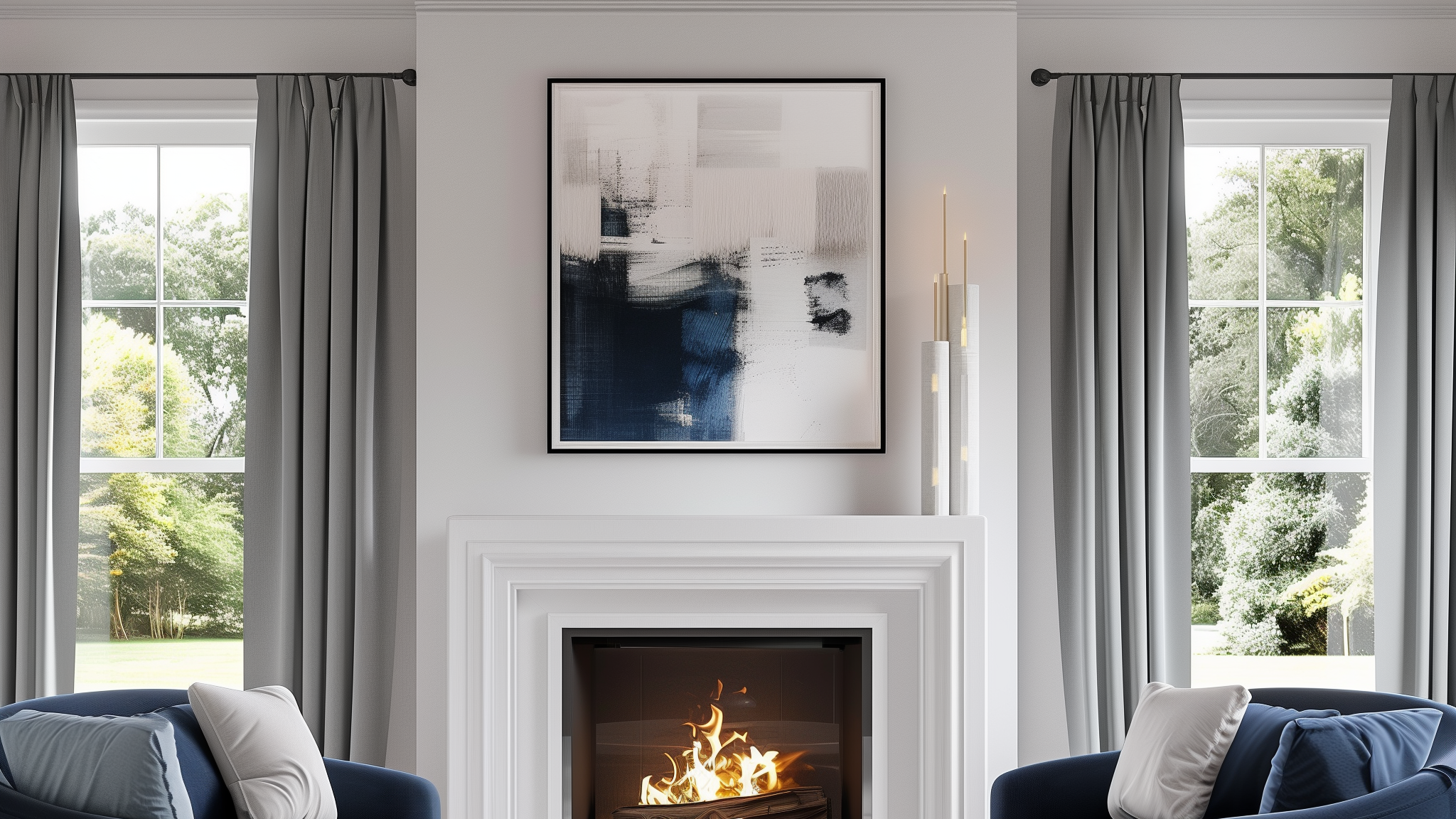
The Art of Placement
You have brought a piece of your story home. Now begins the final, meaningful step: giving it the perfect space to breathe and to speak.
The right placement is an act of honor. It creates the perfect container for the artwork's story, transforming the atmosphere of your entire room. It's about creating a sense of harmony and balance.
Finding a Harmonious Presence
The first principle is scale. Think of it as a quiet conversation between the art and the wall. If a piece is too small, its voice will be lost. If it is too large, it will overwhelm the room. The goal is a balance that feels intentional and deeply, satisfyingly right.
The Grounding Rule: Creating a Cohesive Unit
When hanging art above furniture—like a sofa or headboard—choose a piece that is two-thirds to three-quarters (66% - 75%) the width of the furniture. This connects the two objects into a single, cohesive unit, creating a feeling of profound, grounded stability.
Sofa: 84 inches wide
The Art of Height: The 57-Inch Rule
Galleries and designers hang art so its center is at average eye level, which is 57 inches from the floor. This creates a comfortable viewing experience. Use the slider below to see how it works.
The Breathing Room: Position the bottom edge of the frame 4 to 6 inches above the top of your furniture.
Floor
Curating Your Story (The Art of the Gallery Wall)
A gallery wall is more than a collection of pictures; it is a visual representation of your own rich and layered inner world. It’s a powerful way to tell a complex story, weaving together different moments and feelings into a single, harmonious whole.
Compose on the Floor First: Before making a single mark on the wall, create a safe space for your story to unfold. Measure your intended wall space and tape out a corresponding rectangle on the floor. This becomes the "page" on which you will compose your narrative. Arrange your pieces within this space, experimenting until the story feels complete and balanced to you.
Find Your Anchor: Begin with your largest, most significant piece. Place it slightly off-center. This becomes the heart of your story. Then, place your second-largest piece diagonally from the first. This creates an initial dynamic balance and provides anchors around which the smaller, quieter "voices" of the other pieces can be arranged.
The Final Touch (The Art of Light)
Lighting is the final, reverent act that awakens your artwork. The right light gives the piece its voice, allowing its true colors and emotional depth to be fully seen and felt.
Give it a Stage: As a general rule, the light on your artwork should be about three times brighter than the ambient light in the room. This creates a gentle spotlight, allowing the art's story to be heard clearly above the quiet hum of the space.
Choose a Gentle Guardian: For preserving the life of your art, LED lighting is the modern standard. It is a gentle, protective light, emitting negligible UV or infrared radiation, which are the elements that cause colors to fade over time. It is a safe and sustainable choice to protect your investment in beauty.
Let It Speak Its Truth: When selecting a light, look for a Color Rendering Index (CRI) of 90 or higher. This is simply a measure of how accurately the light reveals color. A high CRI ensures you are not seeing a muted or altered version of the work, but are experiencing the true, authentic voice of the artist's palette.
